Top 10 Things to See and Do in Lakes District, Chile (+ Hotels and More)

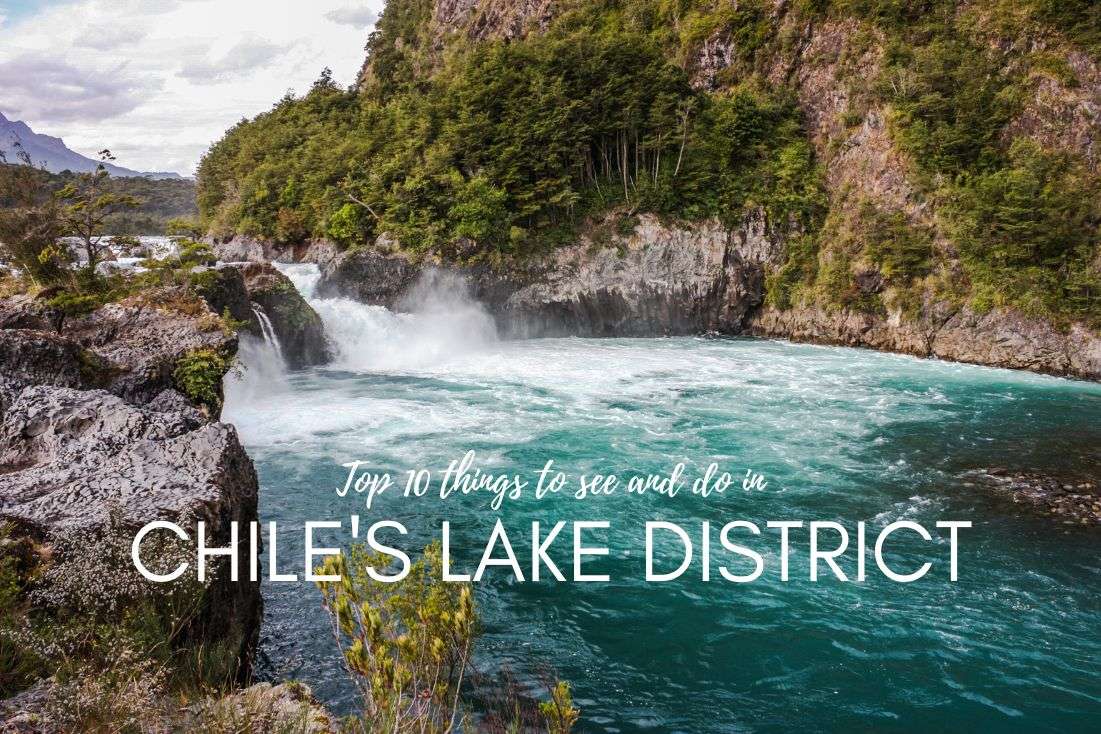
Arguably the most popular tourist destination in Chile stretches over 340 km between Temuco in the north and Puerto Montt in the south. What attracts tourists to Lakes District you wonder? This region is where warm thermal lakes meet volcanoes and fierce rivers. So, the answer is essentially: wonderful-views hikes, volcano climbing, thermal bathing, and adventure sports. We are Jan and Karin, and this is our travel guide through the Chilean Lakes District.
This post may contain affiliate links. We earn a small commission if you make bookings through my links, at no additional cost to you. This helps us keep this blog free, thank you!
You might also be interested in reading:
- 3 Weeks in Chile: The Ultimate Travel Itinerary
- All You Need to Know About Traveling to Chile: 15 Tips and Tricks
- All You Need to Know About Climbing Villarrica in 4 Steps
- 8 Highlights from my Visit to Patagonia
- 20 Best Day Hikes in Chile of Various Difficulties
10. Pucón: Your stop for an adventurous vacation
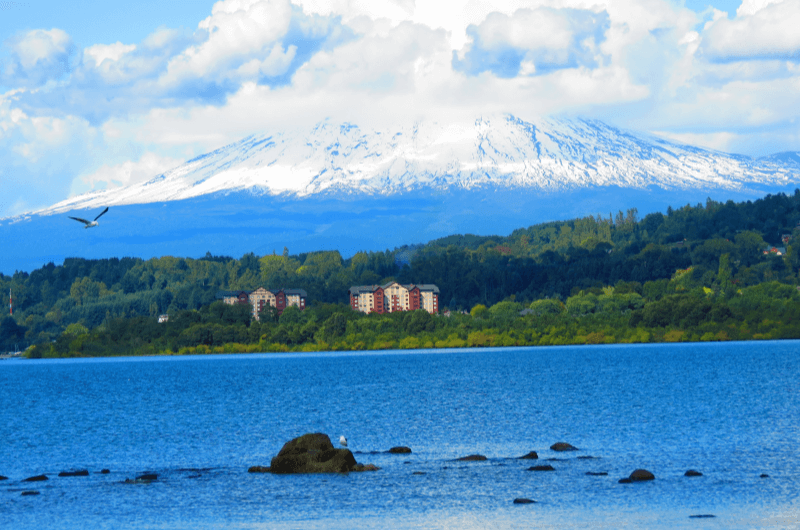
Our first stop in the Lakes District region was Pucón. As you may already know, I’ve found it practical to always settle in a bigger city and take trips from there to explore the surroundings properly, but with comfort. Pucón is the perfect location for that: nestled on the shores of Villarrica Lake, in close proximity to two National Parks (Huerque Hue NP and Villarrica NP), and with plenty of great restaurants and hotels.
Pucón has a strong German-feel thanks to German immigrants from the early 20th century, but don’t worry, the restaurants are great, and the accommodation isn’t as tacky as in German villages. Today, Pucón is a major holiday hub for Chileans and all foreigners altogether. That said, the best time to visit is from September to December as the town is overcrowded from January to March.
Where to stay in Pucón?
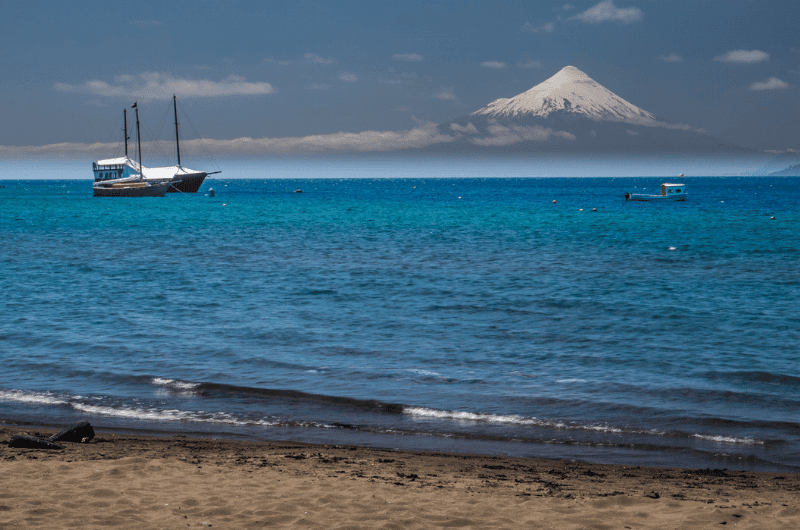
Pucón and Puerto Varas are the best places to stay in Lakes District. To enjoy the area to the fullest, it’s best to stay there at least for two or three days. Here are the top picks for Pucón.
Maki Hotel: Modern haven in the city center
A cozy hotel in the center, with free private parking, garden, and terrace with Villarrica volcano views. Apart from that, the Maki hotel staff are extremely helpful and friendly.
- Prices: from 110 USD (100 EUR), breakfast included
- Adress: Uruguay 640, 4920459 Pucón, Chile
Hotel Antumalal: Beachfront luxury
The beachfront boutique hotel Antumalal is located on the shores of Lago Villarrica, just 2 km (1.20 mi) from the center of Pucón. The hotel boasts with spa, restaurant, and private beach.
- Prices: from 280 USD (247 EUR), breakfast included
- Adress: Camino Pucón a Villarrica Km.2, Pucón, Araucanía, Chile
andBeyond Vira Vira: Luxury in the wilderness
The Vira Vira lodge with its own organic garden is an exceptional accommodation experience. Don’t imagine a shabby cabin. This marvel is modern, stylish, and with huge windows in each room. They offer tailormade tours through Villarrica National Park and a wide range of activities. And what is better than a hot outdoor tub and a fireplace in your room after a volcano hike?
- Prices: from 795 USD (704 EUR), breakfast included
- Address: Parcela 22a, Quetroleufu, Pucón, 4920000 Pucón, Chile
Where to eat in Pucón?
I would say all the restaurants in Lakes District are good. They’re using the best quality ingredients, often from a fresh market or local farmers. As a 100% carnivore, I couldn’t resist but try the grilled specialties in El Fogon de Pucon. I wasn’t disappointed, the food was incredible, the service fast and friendly.
9. Puerto Varas: Southern counterpart of Pucón
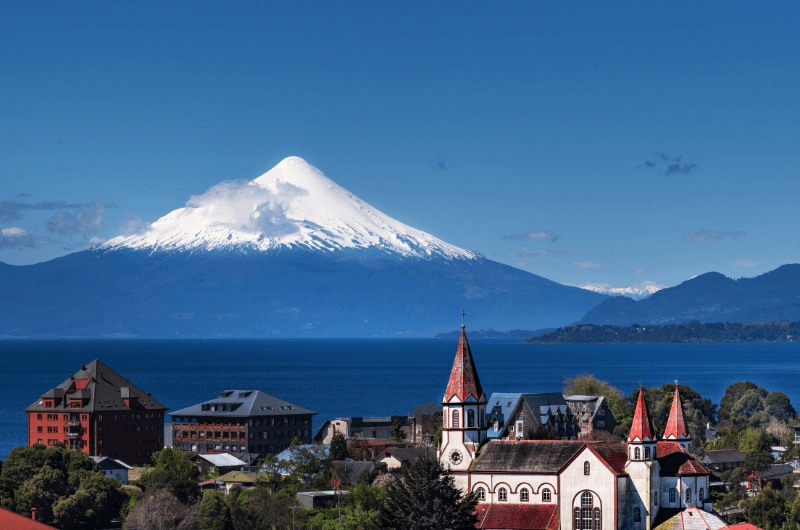
Puerto Varas is a small sleepy town in the southern part of Chile’s Lakes District. So, when I got fed up with the crowds in Pucón (after we’d finished all we planned there), we moved to Puerto Varas. It has a lot to offer too: rafting, hiking, waterfalls, and national parks. In fact, in Patagonia, the itinerary is pretty easy:
- Stroll the town and try the Pil Pil dish in a local restaurant
- Hike around the lakes and volcanos in a nearby national park.
- Pump up some adrenaline while rafting, kayaking, ascending the volcanos, or riding a zip line.
In a nutshell. Of course, there’s something unique in each place. But about that later.
Fun fact: Puerto Varas carries the touch of German architecture as well as Pucón. But with the volcanoes in their backyards and mountain lakes, it feels more like northern Italy or Colorado. Also, with a similar climate.
Read also: Guide to Cervinia: 5 Things You Need to Know
Where to stay in Puerto Varas?
Because I’m a cunning planner, I reserved 4 nights in Pucón and another 3 nights in Puerto Varas in our itinerary, so we had enough time to kill ourselves on hikes and climbing. Honestly, I would schedule more time in our itinerary If I had known, how beautiful this region is.
Hotel Cumbres: Comfort on the shores of Lago Llanquihue
Hotel Cumbres offers the usual: spa, restaurant, free parking, and gym. But the comfy beds and helpful service are unusual. And that’s what you’re looking for after a strenuous hike, or with a gap in your itinerary.
- Prices: from 150 USD (133 EUR). breakfast included
- Address: Imperial 0561, Puerto Varas, Chile
Solace Hotel: A home-like vibes
Warm yourself at a fireplace after a long day climbing or rafting. Solace Hotel represents a home-like haven in the center of the town, only a few minutes’ walk from the lake. The spacious rooms and welcoming staff are especially worth mentioning.
- Prices: from 130 USD (115 EUR)
- Address: Imperial 0211, 5550000 Puerto Varas, Chile
Where to eat in Puerto Varas?
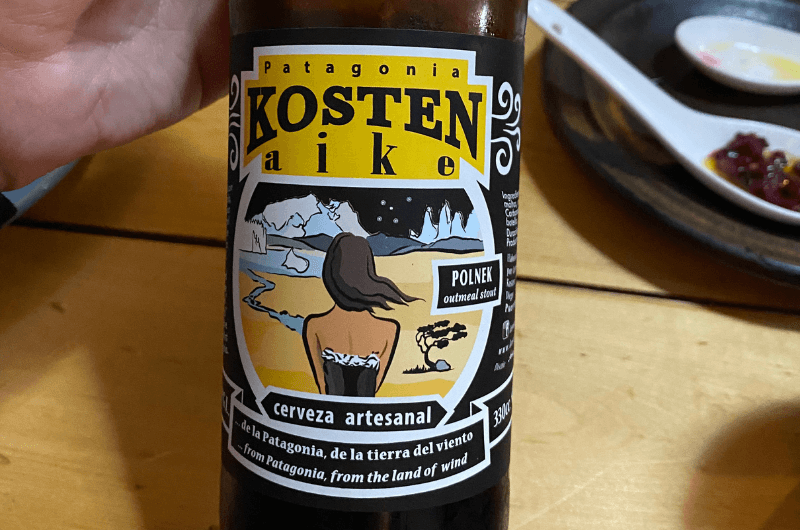
In Lakes District, you can find cuisines from all over the world: Spanish, Italian, German, and even American. We decided on Quintal, a fusion of local and international cuisine, and I highly recommend trying it. The food was delicious and the setting with the lake view was just the cherry on the top. When visiting, be sure to try some of the locally crafted beers.
Our Top Tips for Lakes District: Top highlight: The ascent to Villarrica Volcano. Must try: Bathing in the hot springs in the forest. What they don’t tell you: Don’t go hiking in January, the horse flies will eat you alive.
8. Conguillío National Park

Volcanoes, lagoons, and forests everywhere. Yep, that’s the lake district. Every single one of them is unique though. Conguillío National Park boasts numerous hiking trails, volcanic lagoons, ancient forests, and some rare species such as endemic Araucaria trees, or cordilleran Cypress. In the native Mapudungún language, the name means 'water with pine kernels'. You can see why. The most popular landmarks amount to: Lake Conguillío, Llaima Volcano, Sierra Nevada mountain range and Araucaria Madre (an Aracauria tree with a 2 m diameter trunk).
Best hikes in Conguillio? Here we go:
- Los Carpinteros: Aracauria Madre on the way (moderate, approximately 4 hours)
- Sendero Sierra Nevada: awesome views of the lake, the volcano and glaciers (moderate, approximately 4.5 hours)
- Laguna Arcoiris (easy, half an hour)
7. Alerce Andino National Park

This is exactly one of the places I regret we didn’t squeeze into our schedule. Despite the fact, Alerce Andino is only a few hours' drive from the lively Puerto Montt, it’s one of the less crowded parks. You can hike there for several hours and not meet a single soul. On the other side, you can’t get lost there, as all the trails are well marked. Also, it’s ideal for family hikes as most of the trails are ranked moderate or easy. Here are the highlights:
- Sargazo Lagoon (moderate, approximately 2.5 hours)
- Salto Río Chaicas (moderate, approximately 2 hours)
- Huillifotem Loop Trail (easy, approximately 45 minutes)
Opening hours:
- 9 am to 6 pm (last entry at 4 pm)
- Most of the trails are closed during winter due to large amount of rain (June to August)
Prices:
- Foreigners 5 000 CLP (5.80 USD)
- Chileans 2 500 CLP (3 USD)
- Children and teenagers under 18 are free of charge
6. Huerquehue National Park
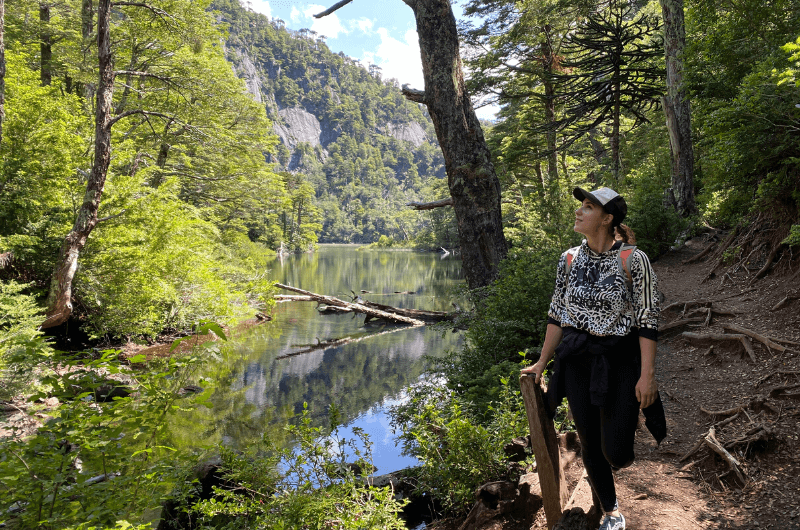
When in Pucón, I decided to reserve one day for Villarrica NP and the other one for Huerquehue NP. The latter is one of the oldest NP in Chile, dating back to 1912. If you read my other articles, you already know I’m not easily amazed. In Chile, I was amazed all the time.
While admiring the magnificent landscapes, don’t get surprised by a sudden encounter with the Chilean rose tarantula (Araña Pollito). It’s one of the most skittish and friendly species, which makes it popular as a pet. In fact, most of the US and European pet stores offer this tarantula species. Luckily, those cute fluffy spiders are night creatures, so the chance of meeting one of those is pretty scarce. Otherwise, I wouldn't get Karin to go with me.
Well, now I’m sure, you’re getting really excited about the hiking options, right? Check these two trails and mind the spiders.
Huerquehue National Park Main Trail
- Difficulty: Medium
- Distance: 27 km (16.6 mi)
- Elevation Gain: 1 535 m (5 036 ft)
- Time: Approximately 10 hours
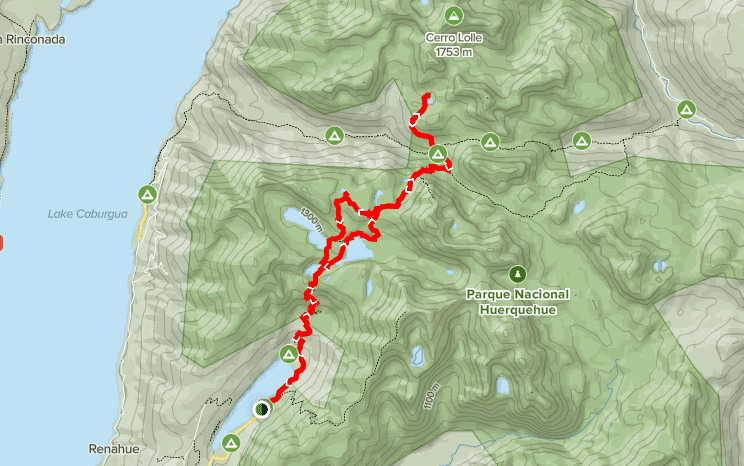
The Main Trail is great if you have enough time to explore the all the highlights. This trail starts from the CONAF Camping site. There are other camping sites on the way if you wish to stay in the wild, but I prefer the comfort of the city hotel. Along the route, you can enjoy the lakes views as well as the mountains towering in the background. And most importantly...escape the crowds.
Huerquehue Lakes Trail
- Difficulty: Medium
- Distance: 10.5 km (6.5 mi)
- Elevation Gain: 689 m (2 260 ft)
- Time: Approximately 5.5 hours
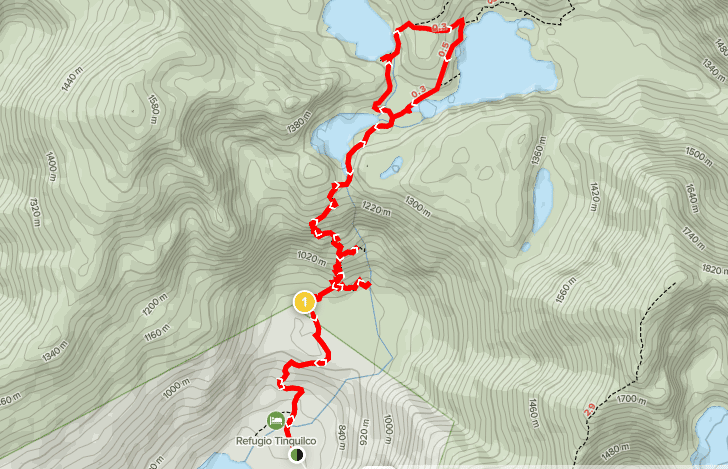
Due to time pressure in our itinerary, I and Karin chose the Lake trail, which is basically a shorter loop version of the Main Trail. I particularly enjoyed the part further up the trail with several lakes next to each other and every single one unique in its beauty. We made it in 4 hours, but I imagine the route can get pretty muddy in wet weather, so bear that in mind, when planning the trip. The starting point is at the kiosk under the mountain.
5. Fancy rafting or kayaking?

I’m an inquisitive creature by nature. The shark cage diving in South Africa is hard to beat but going down the wild river in Chile is something I can settle with. There are plenty of rafting and kayaking options in Lakes District and it’s super cheap! Most of the sections are class 3 or 4 rapids, so it requires certain skills, but it’s not that dangerous. We decided on taking a half-day trip on Petrohué river with Ko’Kayak and we were thrilled. I would come back for more if I knew it was going to be so cool.
Practical info
- count with a half-day for the Petrohué River rafting (see other options at the official websites of the agency)
- you don’t need to pack anything; the agency will provide you with full gear and equipment
- the prices differ according to chosen experience, we paid around 40 USD (36 EUR) per person
Read also: 8 Highlights from my Visit to Patagonia, Chile: Hikes, Volcanos, and More
4. National Park Vicente Perez Rosales
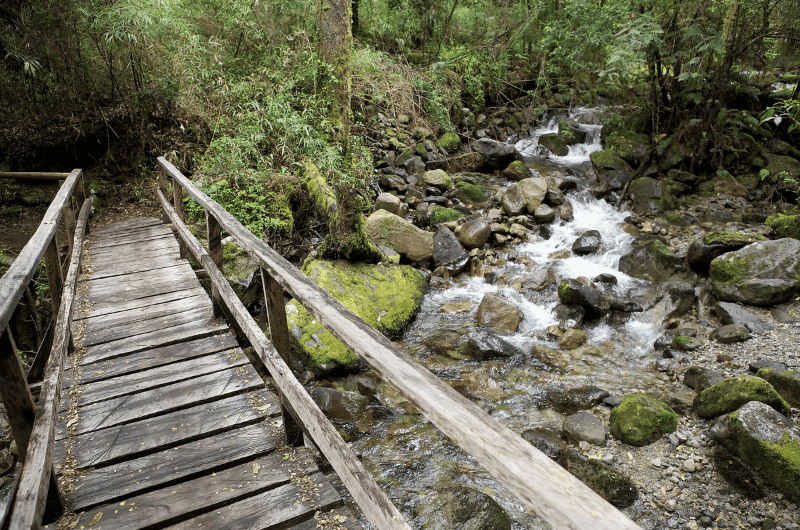
The Vicente Perez Rosales National Park stretches all the way to Argentina and it’s Chile’s first national park, established in 1926.
WARNING:
I was really excited about this trip, as there’s a lot to see there, but I got a lesson there. It was not a big angry guy, nor a strenuous hike. It was fricking huge blood-sucking flies. They are part of the Tabanidae family endemic to Chile and Argentina and they feed on the blood of mammals, we can tell! In Spanish, they call them el gran tirano, I think that’s fitting. Judging by the sound it makes and the size, it’s basically a small helicopter. On the bright side, they appear in this area only in January, I wish I’d known that before. Also, they are attracted by bright colors. Of course, I was dressed up in white...I felt like dressing fancy.
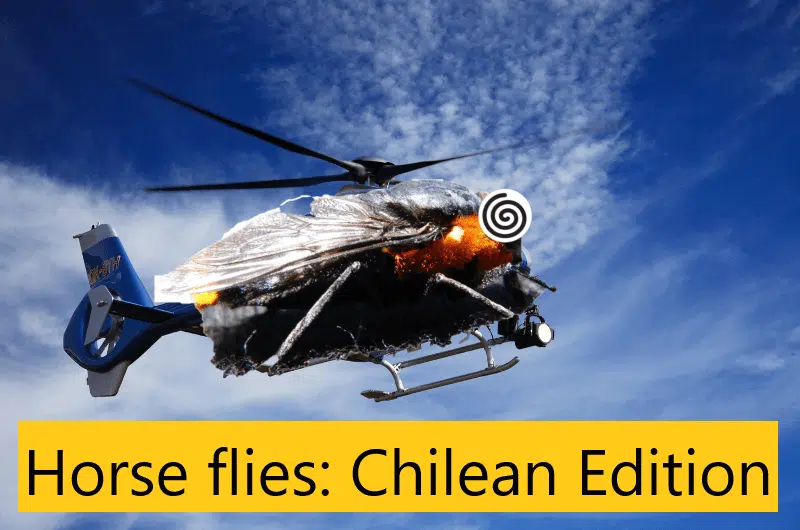
Lago Todos los Santos
Below the slopes of Osorno lies the Todos Los Santos Lake. It’s important mainly thanks to the transportation route to Argentina. But it also makes a beautiful setting for a hike with a views of Osorno. I can recommend these two:
- Desolation Pass (hard, approximately 7 hours)
- Sendero Los Alerces (moderate, approximately 4.5 hours)
If it wasn’t for those damn flies, it would be a really nice hike. We came back to the hotel looking like we’ve just spent half a year on a desert island at the mercy of those bloodthirsty bastards. The route intersects after 4.5 km (2.8 mi), so you can combine the two.
3. Osorno Volcano
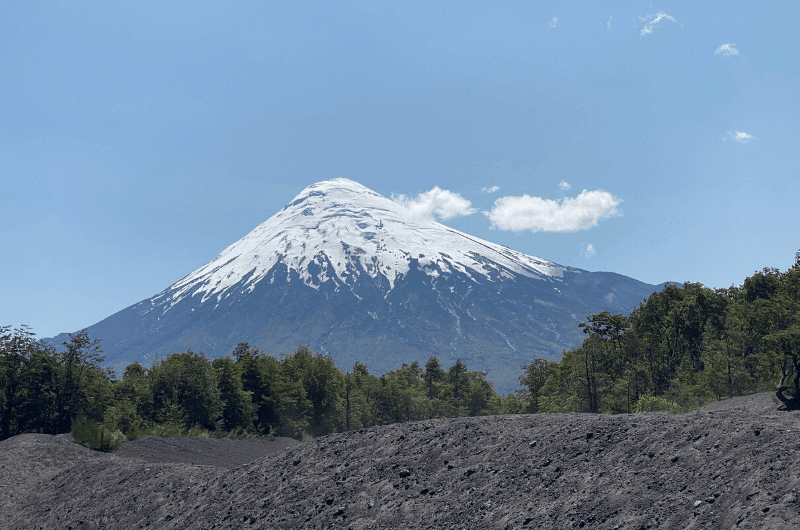
One of the prettiest volcanos in the world is also to be found in the Vicente Perez Rosales NP. As you can see in the picture above, it has a perfect conical shape with a glacier on the top, which makes it look a bit like the Paramount Pictures logo (which is by the way officially inspired by Ben Lomon peak in Utah) or Japanese mountain Fuji.
Practical info
- If you wish to conquer Osorno, you'll need a local climbing agency to get you permission from CONAH (National Forest Corporation).
- The most popular and credible agency is Huella Andina.
- The ascent begins before dawn and includes a sleepover in a hut, so clear the night and a full day in your schedule. Unfortunately, that was the very reason we chose not to participate, as sleeping in a tent is a big no no for us.
- The price per person is 220 000 CLP (262 USD | 232 EUR).
2. Petrohué Waterfalls
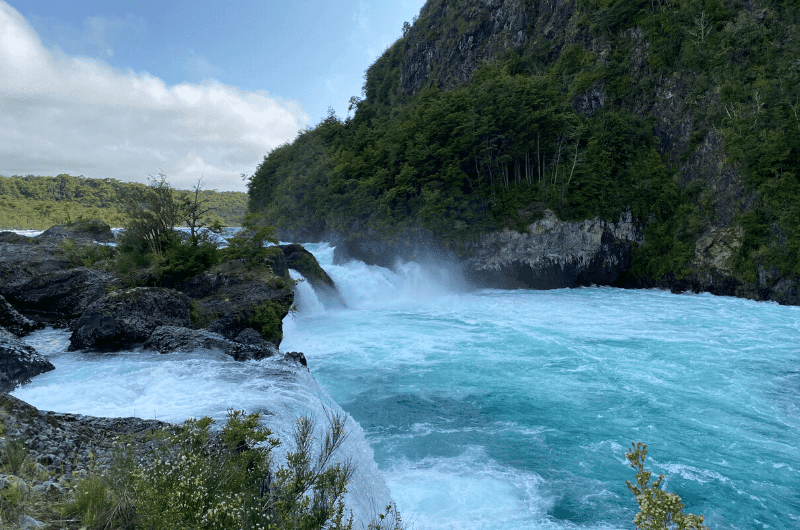
And one more surprise for me. Karin wished to visit the Petrohué Waterfalls. I thought it would be crap, but it was actually one of the most beautiful waterfalls in the world. The waterfalls are a part of the Saltos del Rio Petrohué Park located right next to the Osorno volcano. That means the incredibly blue water runs down the black volcanic rock canyon carved by the lava from Osorno. We spent 2 hours there, exploring the area on the short Petrohué Waterfalls trail, suitable for anybody. Now I understand it’s one of the most visited places in Chile.
Read also: 5 Things You Need to Know About Torres del Paine National Park (Hikes, Hotels, and More)
1. Villarrica Ascent: The adrenaline volcano climbing
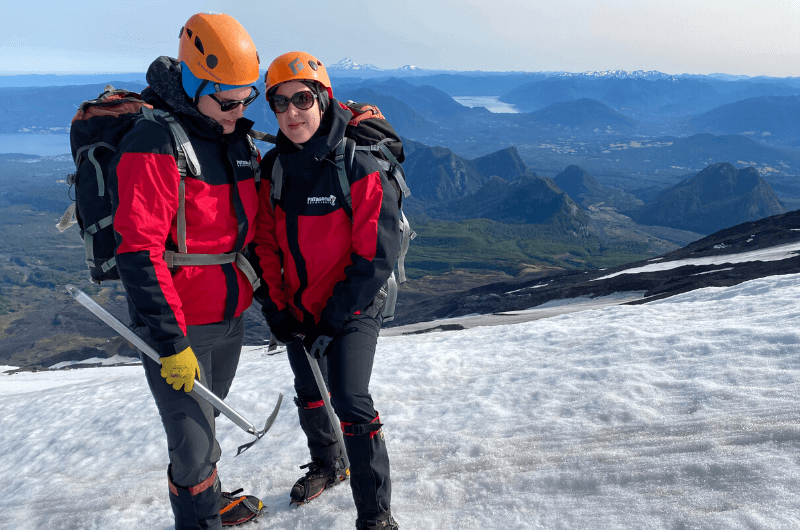
Chile has countless volcanos, but Villarrica is the real deal. It’s the most active volcano in South America and a very popular tourist destination. That said, it’s no cakewalk. More Vietnam-like experience (especially with the surrounding hills covered in mild jungle). What about the climb, I hear you asking. Well, to be honest, it’s thrilling but I almost died there. Imagine ascending from 1 500 m (4 921 ft) to 3 000 m (9 842 ft), sometimes in 45° gradient with:
- ice axes and crampons, because half of the volcano is heavily glaciated
- gas mask because all the sulfur fumes close to the top
And all of that within approximately 3 hours. Deadly combination, considering there are 400+ meters (more than 1 300 ft) of the glacier. I didn’t die up there just because the views and the feeling were amazing! I literally felt the warm ground on the top as the lava was close to the surface. If you’re lucky you can see the bubbling lava over the edge of the crater. Sometimes the tourists even managed to capture the eruption, as the volcano always spews the lava on the same side, so the expedition is safe and sound. I’m telling you; I didn’t feel that way, with my feet slipping off the glacier...
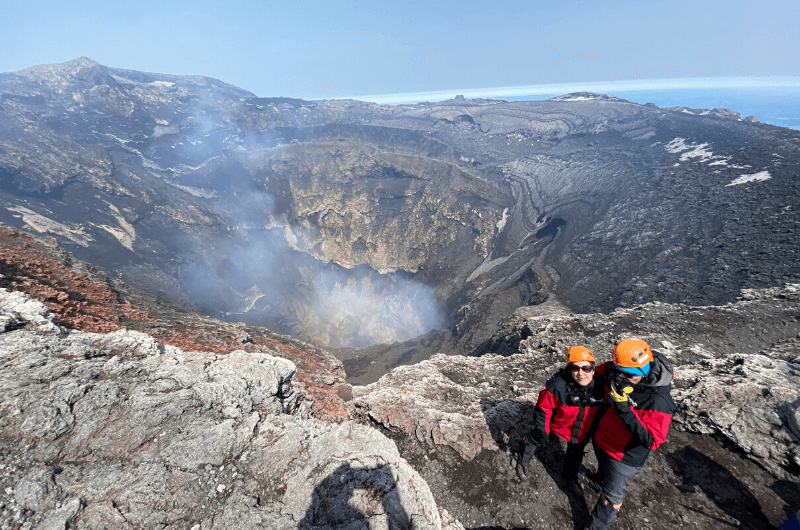
Fun fact: The indigenous Indian tribe Mapuche calls the volcano Rucapillán, meaning “the home of the great spirit”. Taking into consideration that Mapuche is the only native tribe that has never surrendered to the colonizers, I believe they know what they’re talking about.
Sad fact: Unfortunately, nowadays they have to fight again over their land and living space, this time against oil and gas companies.
And now the coolest thing! To save ourselves from the descent, we slid down the volcano on plastic sleds. It took us about an hour, and it was super fun. From now on, I think I won’t regard a climb wholesome until I get my sled! To sum up, the ascent to Villarrica crater was one of the deadliest, most challenging, most awesome experiences of my life.
I put together the detailed info as well as my impressions in the Climbing Villarrica in 4 Steps special article.
Practical info
- Book a tour guide on site. Not only do you need a permit if you go alone, but it’s also a suicidal mission.
- The Villarrica ascent tour costs around 225 000 CLP (268 USD | 236 EUR) and that includes permission, a guide, and the complete gear.
- The meet-up at 7 am in front of the agency and the whole trek took around 7 hours (3-4.5 up and 1.5 hours down).
Read also: 10 Best Hikes in Mexico: Mountains, Temples, and Waterfalls
You can support our blog
If you like our posts and would like to get some awesome bonus material like itineraries, our e-book, or exclusive content, you can check out our Patreon memberships. If you decide to show your love, thank you!
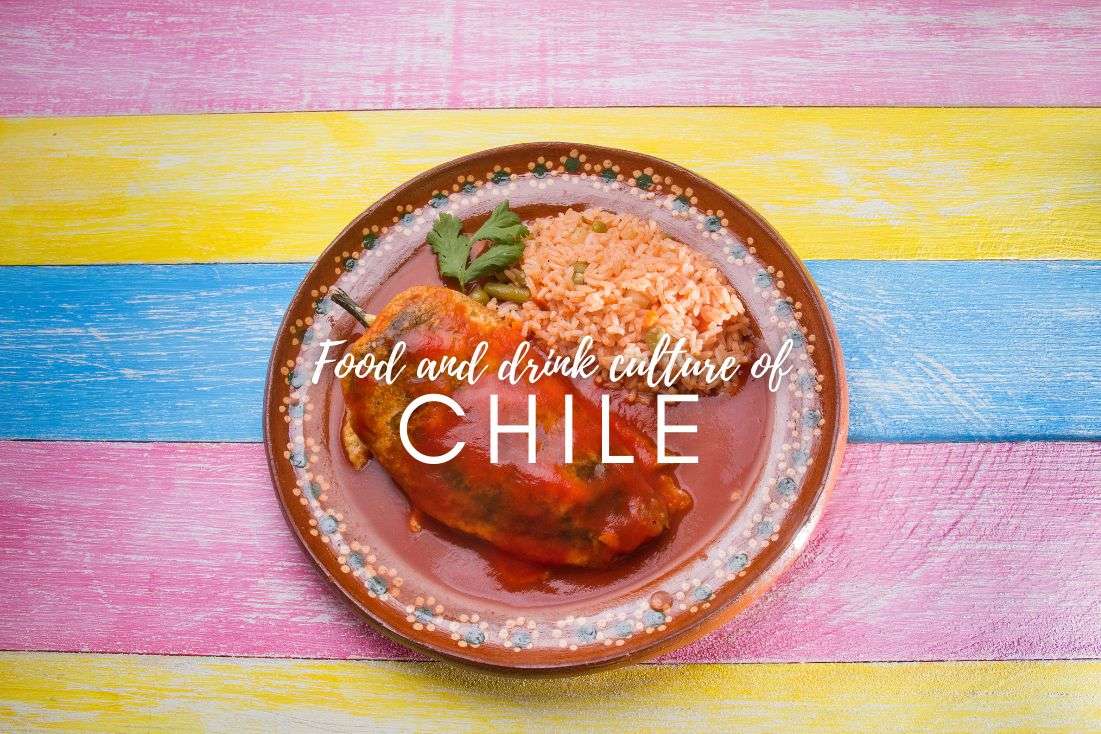
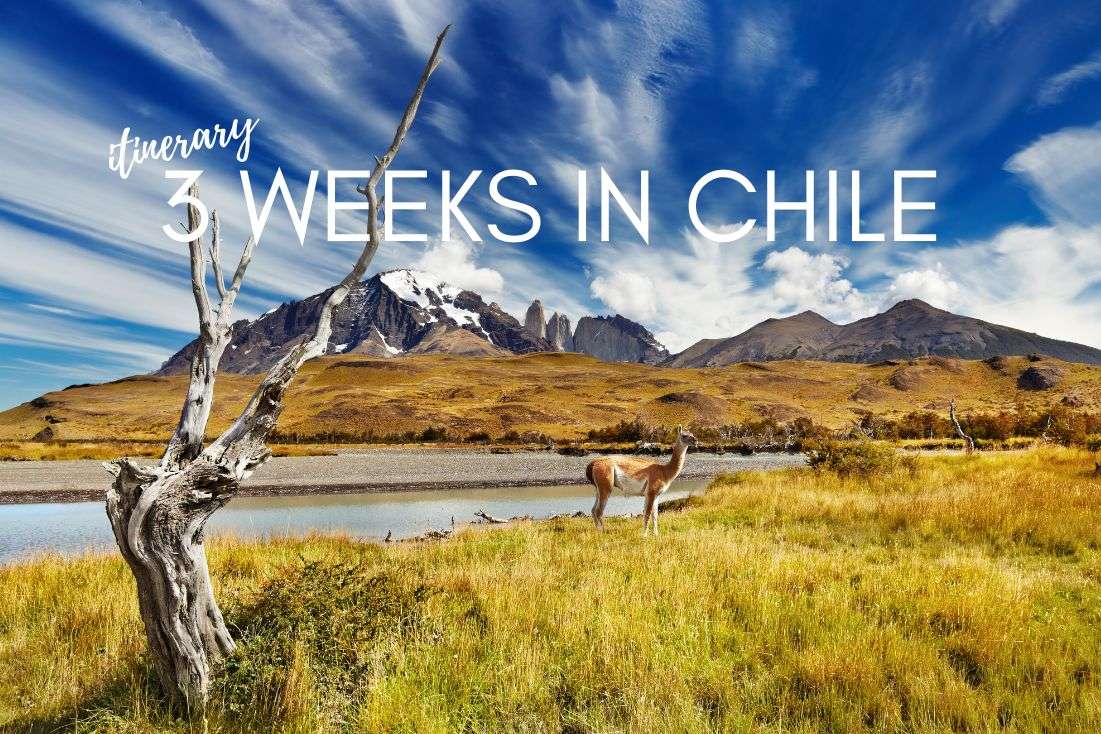





Comments
Thoughts? Give us a shout!